Proper Air Squat Mechanics
First, we have to understand that there are a lot of factors regarding squatting. The following is a general guide for proper air squat mechanics and is not the “end-all-be-all.”
“Air” Squat or squat without weight is important to understand and master prior to picking up the barbell or dumbbell. Your mechanics are possibly the most important aspect to consider when attempting any exercise and maybe none more than a squat or lunge. We see so many people confused about how they are supposed to bend, move or lift. To help clear the confusion we will cover common faults and how to correct these. I say the better your form > the stronger your joints will become > the stronger your joints > the more you’ll be able to lift > the more you can lift > the stronger you will get!
Foot Placement
This will vary from person to person but the general rule of thumb is: heels in line with the shoulders, or slightly outside the shoulders (see below). We also want the knees in line with or “tracking” with the toes (see below). Eventually, with proper range of motion, practice, and stretching, mobility will increase and we can start to “creep” our toes forward more.
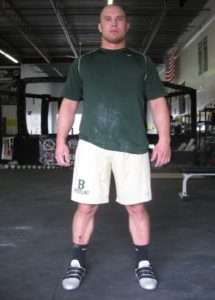
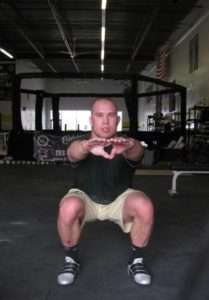
Range of Motion
At the bottom of the squat we want our weight distributed or “rooted” in the heel. We know we have reached proper depth, when the crease of our hip is slightly below our knees (see below). It is also ideal for the tibia to be as perpendicular to the floor as possible to reduce the amount of shearing force to the knee. The knees take enough punishment in our day to day activity (We want our training protocol to strengthen our joints, not add to the punishment they take daily in our sport of choice.) The chest should remain in as upright position as possible, in what I call a “proud” position, Also notice how the knees are BEHIND the toes.

Note: crease of the hip below knees
Common Faults
1. Weight distributed or “rooted” on the balls of the feet, instead of the heels. This can shift your weight to far forward pushing the knees forward and increased strain on the knees, This can be easily corrected one of two ways. Shift back on the heels, and lift the toes off the ground as you lower your hips. See below
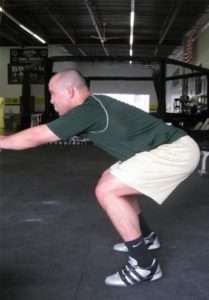
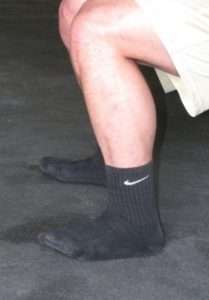
2. The next common fault is an excessive forward torso lean. An excessive forward torso lean is when the torso leans too far forward, and the chest is not as upright as it should be. In minor cases of an excessive forward lean, you can simply point your outstretched arms toward the sky as you lower into the squat and making sure not to start the squat process with the shoulders as this will cause a sway in the back and the chest to point towards the ground.
We want to force the torso into a more upright, “proud” position, allowing the glutes and hamstrings to be recruited properly. Another way to fix an excessive forward torso lean, is to face a wall with your toes 6″-8″ from the wall and try to squat to proper depth, without your face or knees hitting the wall. There are many ways to correct an excessive forward torso lean, these are just two that I have found work well with different types of people.

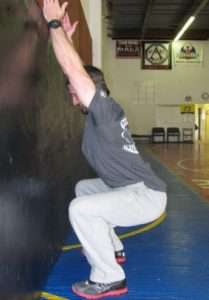
3. The final common fault seen with the air squat is when the knees “cave in” medially (see below). This can be fixed by distributing the weight on the outside edges of the feet and pushing the knees outward. Driving the knees outward should be done by everyone but sometimes we need to exaggerate the outward driving of the knees with the aid of bands.
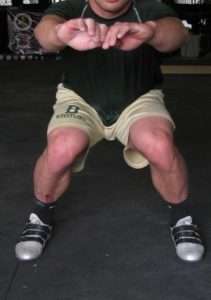
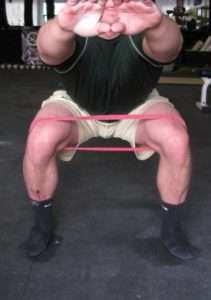
At first, these corrections may seem tricky, as if you will lose your balance and fall backwards. After a while, you will gain stability and squatting properly becomes much easier. Keep practicing good form on squats and you will finally reap the benefits of healthy knees and watch your strength gains increase.






